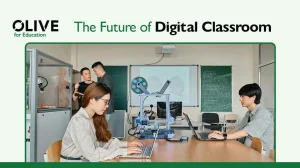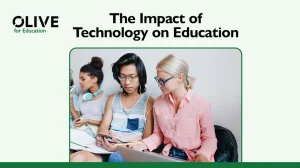Introduction
Technology is revolutionizing education worldwide, and Ireland is no exception. From interactive whiteboards to AI-driven personalized learning platforms, digital tools are shaping the way students learn, engage, and succeed. For school leaders, embracing technology is no longer a choice—it’s a necessity.
The University of Limerick’s study, Understanding the Impact of Technology in Education on Student Progression and Learning Outcomes, highlights the tangible benefits of integrating technology into teaching. This article explores key insights from the study and provides practical guidance for Irish school leaders looking to drive digital transformation in their institutions.
Insights from the University of Limerick Study
The University of Limerick’s research underscores the significant impact of technology on student progression and learning outcomes. Some of the key takeaways include:
1. Enhanced Student Engagement
Digital tools make learning more interactive and engaging. According to the study, students using technology-driven learning resources, such as gamified lessons, virtual simulations, and multimedia content, demonstrate higher levels of participation and motivation.
2. Personalized Learning Experiences
Adaptive learning technologies, powered by AI and data analytics, allow teachers to customize lessons to match individual student needs and learning paces. This approach has led to improved comprehension and retention rates among students.
3. Improved Academic Performance
Schools that effectively integrate digital platforms into their curriculum report higher test scores and better student progression rates. The study found that blended learning models—where traditional teaching is combined with digital resources—enhance overall academic success.
4. Preparation for the Future Workforce
Technology equips students with essential 21st-century skills, such as digital literacy, problem-solving, and critical thinking. These skills are vital in preparing them for higher education and future careers in a rapidly digitizing world.
The Role of School Leaders in Driving Digital Transformation
1. Creating a Vision for Digital Integration
School leaders must champion the use of technology in classrooms by aligning digital strategies with the Digital Strategy for Schools 2027. This means setting clear goals, identifying the right tools, and ensuring a seamless transition to tech-enhanced learning.
2. Providing Teacher Training and Support
A lack of training is one of the biggest barriers to successful EdTech adoption. School principals and administrators should:
- Encourage participation in Oide Digital Technologies training programs.
- Facilitate peer-to-peer learning among teachers to share best practices.
- Invest in continuous professional development to enhance teachers’ digital skills.
3. Overcoming Resistance to Change
Some educators and parents may have concerns about screen time, cybersecurity, and the effectiveness of technology in learning. Addressing these concerns involves:
- Demonstrating evidence-based benefits from studies like the one from the University of Limerick.
- Implementing clear internet safety policies to protect students.
- Ensuring that technology complements—not replaces—traditional teaching methods.
Real-World Examples & Case Studies
1. St. Oliver’s National School, Dublin
This Irish primary school successfully implemented interactive classroom boards and AI-powered reading assistants to support early literacy development. As a result, students improved their reading comprehension scores by 30% over a year.
2. Finland’s National Digital Learning Strategy
Finland, a global leader in education, integrates one-to-one device programs, online teaching technology tools, and learning analytics to track student progress. Irish schools can draw inspiration from Finland’s teacher-driven tech approach.
3. Microsoft’s AI-Enabled Learning Platform
Several secondary schools in Ireland have adopted Microsoft Teams for Education, using AI-powered insights to tailor assignments based on individual student performance, leading to better engagement and improved learning outcomes.
Actionable Steps for Schools
1. Develop a Technology Roadmap
- Conduct a digital readiness assessment using the Digital Learning Framework.
- Set short-term and long-term technology goals aligned with the Digital Strategy for Schools 2027.
2. Explore Funding and Resources
- Apply for ICT Grants for Schools to support EdTech investment.
- Leverage e-learning companies in Ireland, such as Olive for Education, for cost-effective digital learning solutions.
3. Invest in Assistive Technologies
For students with diverse learning needs, assistive technology in schools—like speech-to-text tools and interactive smartboards—can enhance accessibility and inclusion.
4. Foster a Digital-First Culture
- Encourage teacher collaboration through professional learning networks.
- Organize internet safety talks for schools in Ireland to promote responsible digital citizenship.
Call to Action
The digital revolution in education is here, and school leaders play a crucial role in making it a success. By leveraging technology effectively, Irish schools can enhance student engagement, improve academic outcomes, and prepare learners for the future.
At Olive for Education, we specialize in helping schools develop and implement effective digital learning strategies. Contact us today for a free consultation on how to optimize technology integration in your school.
👉 Get in touch with us now to start your digital transformation journey!











